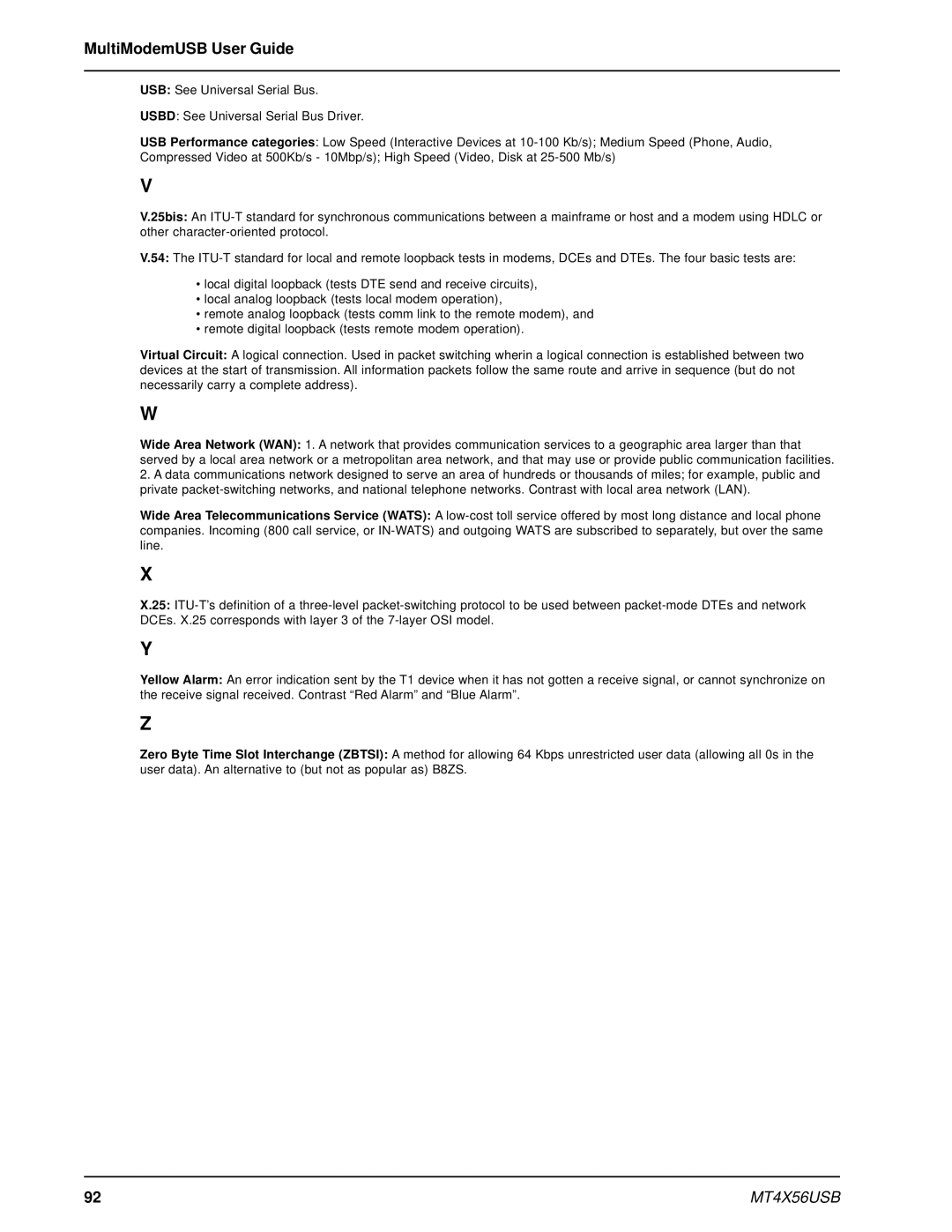
MultiModemUSB User Guide
USB: See Universal Serial Bus.
USBD: See Universal Serial Bus Driver.
USB Performance categories: Low Speed (Interactive Devices at
V
V.25bis: An
V.54: The
•local digital loopback (tests DTE send and receive circuits),
•local analog loopback (tests local modem operation),
•remote analog loopback (tests comm link to the remote modem), and
•remote digital loopback (tests remote modem operation).
Virtual Circuit: A logical connection. Used in packet switching wherin a logical connection is established between two devices at the start of transmission. All information packets follow the same route and arrive in sequence (but do not necessarily carry a complete address).
W
Wide Area Network (WAN): 1. A network that provides communication services to a geographic area larger than that served by a local area network or a metropolitan area network, and that may use or provide public communication facilities.
2.A data communications network designed to serve an area of hundreds or thousands of miles; for example, public and private
Wide Area Telecommunications Service (WATS): A
X
X.25:
Y
Yellow Alarm: An error indication sent by the T1 device when it has not gotten a receive signal, or cannot synchronize on the receive signal received. Contrast “Red Alarm” and “Blue Alarm”.
Z
Zero Byte Time Slot Interchange (ZBTSI): A method for allowing 64 Kbps unrestricted user data (allowing all 0s in the user data). An alternative to (but not as popular as) B8ZS.
92 | MT4X56USB |
